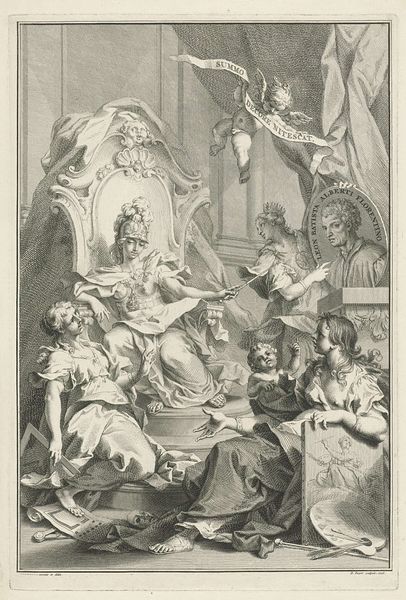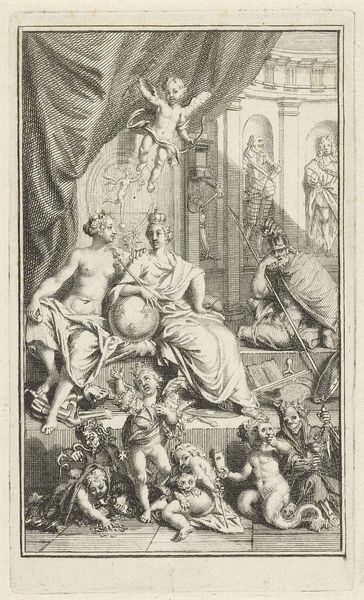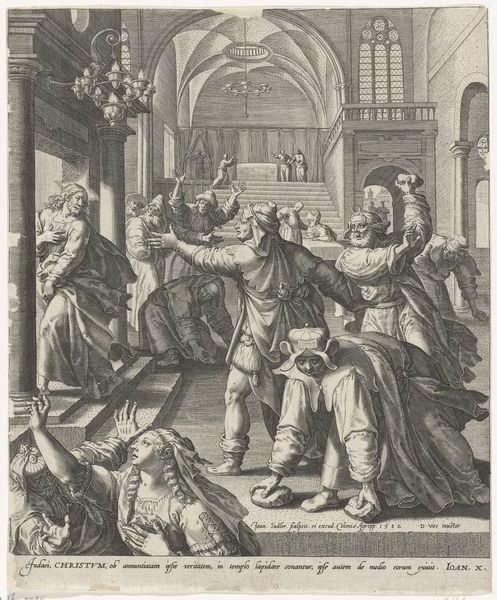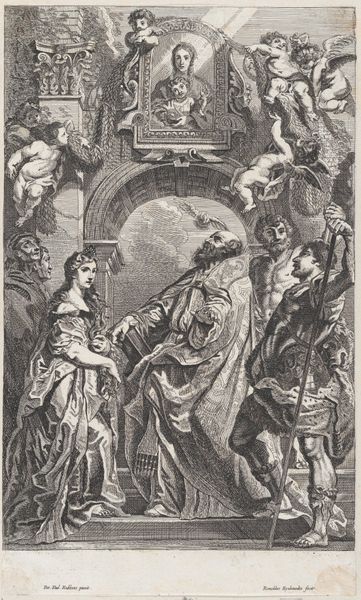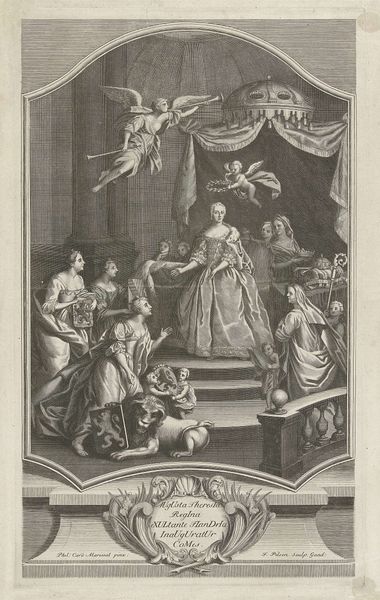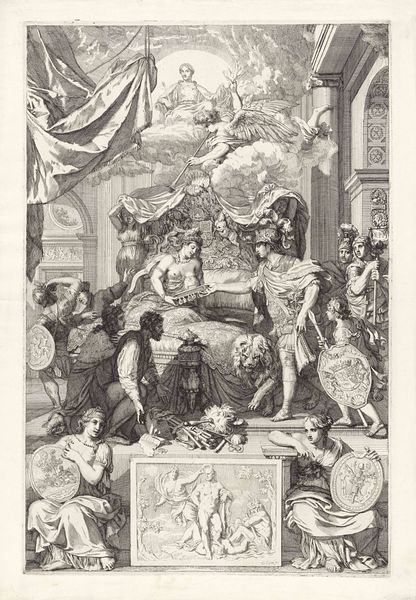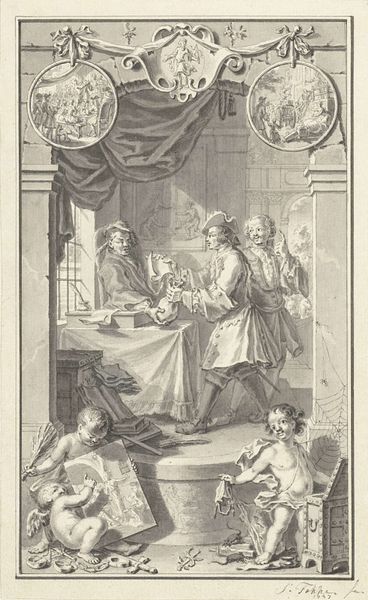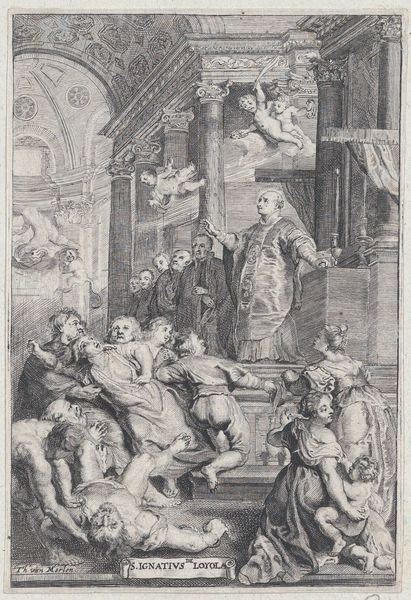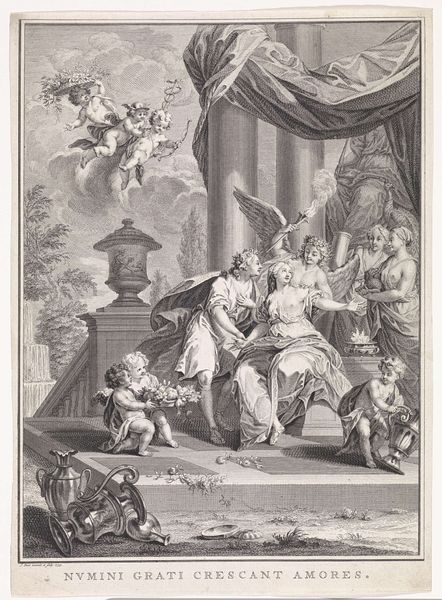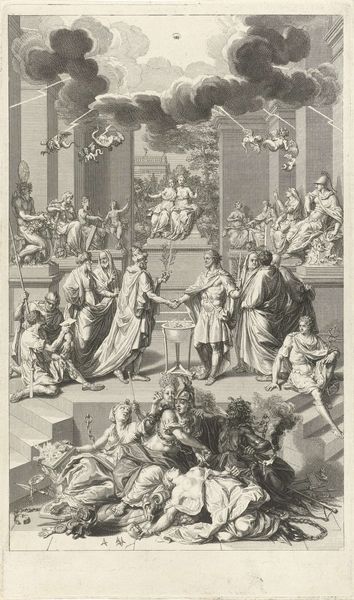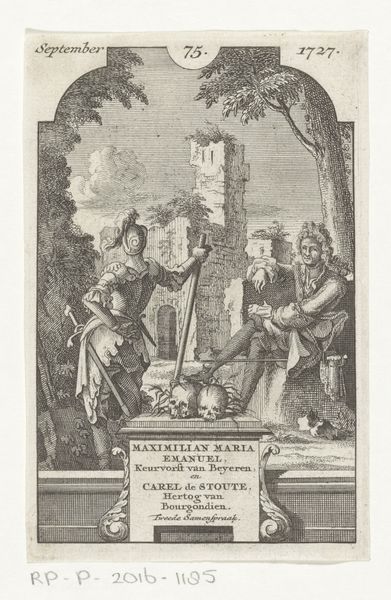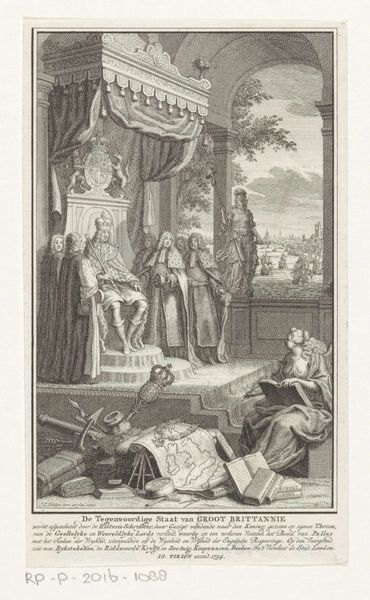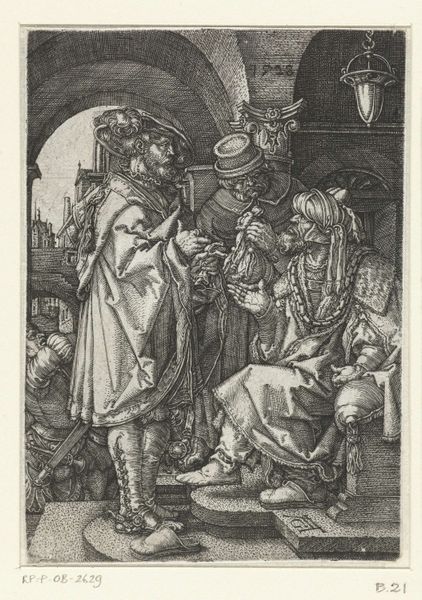
print, engraving
#
baroque
# print
#
charcoal drawing
#
figuration
#
history-painting
#
engraving
Dimensions: height 510 mm, width 360 mm
Copyright: Rijks Museum: Open Domain
Curator: It’s hard to miss this compelling engraving, "The Four Church Fathers," crafted in 1629 by Cornelis Bloemaert, housed right here at the Rijksmuseum. What's your immediate read? Editor: It's imposing! All these figures packed into the scene, all those swirling draperies—it almost feels like a spiritual tornado. Though, there’s a quiet reverence humming beneath the surface, don't you think? Curator: Absolutely, and that tension is key. Bloemaert masterfully balances the dramatic Baroque style with a profound sense of solemnity. Each father—Augustine, Jerome, Gregory, and Ambrose—is distinctively portrayed. Have a closer look at Jerome—the haggard old scholar, pointer in hand, mediating and explaining—he exemplifies humility through the ascetic way of living. Editor: He really stands out against the pomp and circumstance! There’s such contrast between his exposed shoulder and St. Augustine's ornamented garb. Speaking of ornamentation, what's the significance of that hovering dove? Is it the holy spirit, the creative principle descending upon their meeting? Curator: Spot on. The descending dove certainly embodies divine inspiration. The fathers’ symbolic link to scripture, traditions, and divine guidance highlights the symbolic link between tradition and theology. Their scholarship provided cornerstones of early Christian thought, all under that divine light. It connects to the continuous evolution and interpretation within the Church itself. Editor: Thinking about that continuity, it’s fascinating how symbols like this resonate through centuries. I am still unsure about that stylistic treatment though—all that baroque flourish could equally symbolize the rise of institutional rigidity! Am I alone in picking up those undertones of political strategy in the service of doctrine, here? Curator: That's an interesting point! And the strength of symbolism lies precisely in that multiplicity of interpretations. In an era marked by religious reformation, art had a special power as an evocative bridge—a role that endures, prompting questions like yours. Editor: A compelling dialogue, just as the artist may have hoped! These symbols, they are more alive than any individual... Food for thought, really. Curator: Indeed, and as a visual encapsulation of faith, law, and tradition, I am thankful that we can spend a moment together engaging with these concepts that have reverberated through history.
Comments
No comments
Be the first to comment and join the conversation on the ultimate creative platform.
